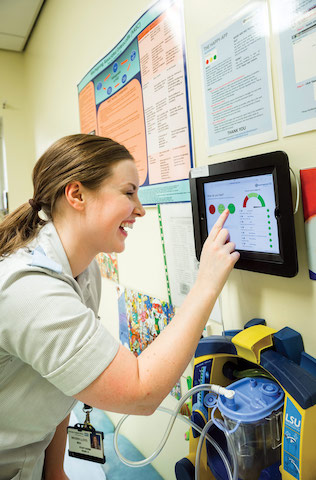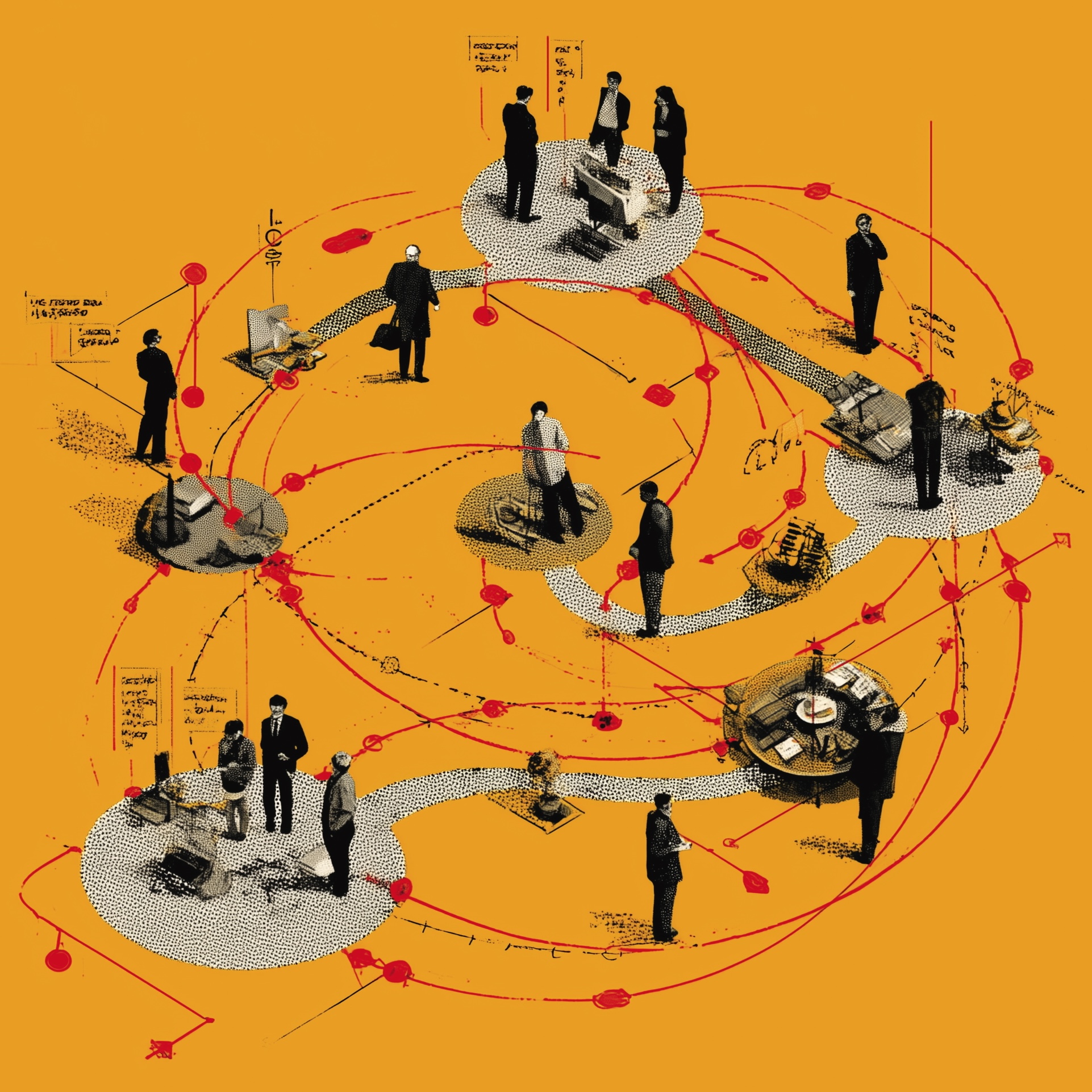How Bristol’s ‘happy app’ helped managers tackle low staff morale
With staff morale unnervingly low across the NHS, managers need to identify and resolve problems fast. We tap into one award-winning solution – Bristol’s ‘Happy App’.

When University Hospitals Bristol NHS Foundation Trust looked at the results of its 2014 staff survey, it showed that many staff didn’t feel their views were listened to or taken account of by senior staff.
However, consultant surgeon Andrew Hollowood explains that the delay between carrying out the staff survey and publishing the results meant the trust couldn’t act quickly on the issues it raised. Managers needed to engage with staff right down to team or service level, and find a way for staff to report their concerns so managers could respond much more swiftly.
“Unlocking the simple issues can make all the difference,” says Hollowood. “How someone feels can affect their team, their ward or service, relationships between teams and, ultimately, patient care.”
Teams led by Hollowood, then head and neck surgery clinical chair, and Anne Frampton, head of the paediatric emergency department at the trust’s Bristol Children’s Hospital, worked to identify the issues that made staff feel happy, sad or somewhere in between, and develop an online tool to track staff moods.
A pilot version of what is now known as the Happy App, based on an Excel spreadsheet, was introduced in February 2015, but suffered from limitations and did not deliver results in real time.
Real time results
A more user-friendly Happy App website was rolled out seven months later. Staff can use the Happy App during a shift, via a dedicated computer terminal or an iPad available in wards, service areas or offices. On the home screen, users choose their current mood by selecting a happy, neutral or sad face (green, yellow or red) to show how they are feeling and then choose a category which most accurately describes the reason for their mood, such as equipment or team issues. They can then add comments to explain their choice.
Authorised managers have real time access to results, providing a constantly updating indicator of staff mood in each area. This is supposed to take 20 to 30 minutes a day in total, with staff receiving initial feedback the following day.
It quickly emerged that staff were often frustrated by problems which seemed too trivial to approach a manager about, but which they didn’t feel able to resolve themselves – what might have been easily-achievable quick wins often became ongoing sources of irritation and resentment.
In the first eight months after the site went live in September 2015, over 50% of comments were positive, with praise for good team working, good patient flow or an individual member of staff. Team working accounted for 26% of all comments, and 71% of these comments were positive.
Negative comments included concerns about the introduction of new working practices and missing equipment. On average, ‘red face’ responses persisted for two weeks while new processes were introduced and embedded.
Not a ‘moan tool’
“The app was refined to be able to identify more specific reasons for someone to be happy or unhappy, which makes it a more useful way of measuring its effects. It’s not a ‘moan tool’,” says Dr Sabi Redmond, ethnography team lead at the Collaboration for Leadership in Applied Health Research and Care West, who worked with the trust on developing the app.
She explains that the app represents around 10% of the interaction between staff and senior management, and says management engagement is key to its successful implementation. “People can be cynical about ‘tech fixes’ but engaging staff becomes a virtuous circle,” she says. “Feedback is also published on the app, so you can quickly see whether what you put on makes any difference.
“Where managers are worried about the implications or indifferent to its potential impact, and therefore don’t invest the time, staff don’t feel they’re heard and staff engagement drops off quickly. Responses [by management] come up on the home page, so to make a response is a really easy win for managers. Feedback leads to further feedback.”
Choosing where to locate the terminals and iPads within the trust was partly a matter of trial and error. Over time, the implementation team realised terminals needed to be located discreetly, but not overly so. A trial location in break rooms quickly revealed that staff did not want to use the app during their breaks, and locating terminals in quiet corridors was also unsuccessful. “It was too obvious that you were going there to use the app,” says Stephanie Smith-Clark, an improvement lead at the trust.
Anonymity is key
This was especially important because the anonymity of the app is key to its success, says Hollowood. “We’re trying to be rid of hierarchies in the NHS but some junior staff still do not feel they can address issues with senior staff. Especially staff such as cleaners and porters. This is also an opportunity for night-time staff, who are so vital but may not see managers while they are at work.”
Frampton believes that people who feel confident to speak up will continue to do so, although many others “don’t have the courage, or are too shy, or don’t have the access that senior staff do. But [if they’re not addressed] little things can build up to become a big issue. Often people don’t expect a problem to be fixed overnight but are happy when they realise that an issue has been raised and taken note of.”
At present around 75% of workplaces have access to the Happy App. Opportunities to use the app are advertised through internal newsletters and email bulletins, and the trust hopes to expand coverage to 90% by 2020.
Smith-Clark says it may be more difficult to open up access to the remaining areas of the trust because they don’t fall into easily defined workplaces such as wards or offices. “There can sometimes be teams working across areas or multiple teams working within an area,” she explains.
The trust is reluctant to adapt the app for use on smartphones because of the need for anonymity and to comply with data protection rules. There are also concerns that not all staff can use mobiles at work and that patients may object to staff using their phones on the wards. However, the app could be adapted for use in other trusts, as well as in different settings such as mental health or community-based care. There is also the potential for the system to be extended to gather feedback from patients as well as staff.
Dr Frampton believes that thinking about how and where the app will be used has helped teams define themselves and think about how they’re administered and managed. “It’s a real opportunity to improve relationships between middle managers and teams. At a local level you can definitely see a difference in how staff feel,” she says.
Emma Dent is a freelance health policy writer and editor.
Related News
-

What now? Seven expert takes on the Ten-Year Plan
The government’s Ten-Year Plan for the NHS in England has met with enthusiasm and exasperation in equal measure. We asked seven healthcare experts to give us their considered view on one aspect that interests, excites or annoys them.
-

NHS job cuts: what are your options?
When politicians start reforming the NHS, there is only one certainty: some people will lose their jobs. But what options might be on the table and how does redundancy work? Corrado Valle explains.
-

We get knocked down. We get up again.
With its brutal NHS cuts and chaotic reform plans, the government is moving fast and breaking things (again). It will be up to managers to fix them (again), writes Geoff Underwood.